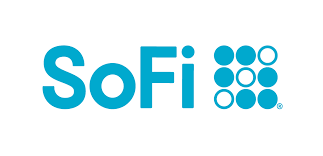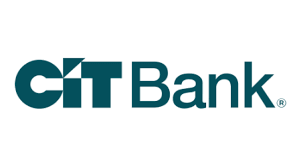Choosing a bank can feel overwhelming. They all kind of blend together, right? But the truth is, it's less about the brand name and more about what fits your life. Picking the right bank is about knowing what matters most to you -- whether that's low fees, easy access, or better interest rates.
I've been through a few types myself. Growing up, I banked with a local credit union -- loved the personal touch and low fees. Then I switched to Chase because of convenience and all the branch locations. Now, I mostly use LendingClub, an online-only bank, because of the higher savings rates and fewer fees. Different stages, different needs.
Below, I'll walk you through how to find a bank that fits your needs.
Step 1: Figure out what kind of bank fits your style
Banks come in all shapes and sizes. Here are the main types, each with their own vibe:
- Online banks: No physical branches, just apps and websites. Usually better rates and lower fees, but cash access can be trickier.
- Regional or local banks: Smaller footprint but more personal service. Great if you like talking to a teller face to face.
- Big national banks: Tons of locations and services, but can feel impersonal and sometimes hit you with extra fees.
- Credit unions: Member-owned and nonprofit. Often friendlier with better rates -- but you might need to qualify for membership.
Pick the type that fits how you like to bank. If you're comfortable doing everything on your phone and want high interest, online banks usually win. If you want in-person help and easy ATM access, regional banks or credit unions might be better.
Keep reading: A Beginner's Guide to Opening and Managing Your Account
Compare savings rates
Make sure you're getting the best account for you by comparing savings rates and promotions. Here are some of our favorite high-yield savings accounts to consider.
| Account | APY | Bonus | Next Steps |
|---|---|---|---|

Open Account for SoFi Checking and Savings
On SoFi's Secure Website.
4.90/5
Our ratings are based on a 5 star scale.
5 stars equals Best.
4 stars equals Excellent.
3 stars equals Good.
2 stars equals Fair.
1 star equals Poor.
We want your money to work harder for you. Which is why our ratings are biased toward offers that deliver versatility while cutting out-of-pocket costs.
|
up to 4.00%
Rate info
Earn up to 4.00% Annual Percentage Yield (APY) on SoFi Savings with a 0.70% APY Boost (added to the 3.30% APY as of 12/23/25) for up to 6 months. Open a new SoFi Checking and Savings account and pay the $10 SoFi Plus subscription every 30 days OR receive eligible direct deposits OR qualifying deposits of $5,000 every 31 days by 1/31/26. Rates variable, subject to change. Terms apply at sofi.com/banking#2. SoFi Bank, N.A. Member FDIC.
Min. to earn: $0
|
Earn $50 or $300 and +0.70% Boost on Savings APY with direct deposit. Terms apply.
Earn up to 4.00% Annual Percentage Yield (APY) on SoFi Savings with a 0.70% APY Boost (added to the 3.30% APY as of 12/23/25) for up to 6 months. Open a new SoFi Checking and Savings account and pay the $10 SoFi Plus subscription every 30 days OR receive eligible direct deposits OR qualifying deposits of $5,000 every 31 days by 1/31/26. Rates variable, subject to change. Terms apply at sofi.com/banking#2. SoFi Bank, N.A. Member FDIC. |
Open Account for SoFi Checking and Savings
On SoFi's Secure Website. |

Open Account for CIT Platinum Savings
On CIT's Secure Website.
4.60/5
Our ratings are based on a 5 star scale.
5 stars equals Best.
4 stars equals Excellent.
3 stars equals Good.
2 stars equals Fair.
1 star equals Poor.
We want your money to work harder for you. Which is why our ratings are biased toward offers that deliver versatility while cutting out-of-pocket costs.
|
3.75%
Rate info
3.75% APY for balances of $5,000 or more; otherwise, 0.25% APY
Min. to earn: $5,000
|
Earn a bonus of up to $300 after a one-time deposit of $25,000+
This limited-time offer to qualify for a $225 cash bonus with a minimum deposit of $25,000 or a $300 bonus with a minimum deposit of $50,000 is available to New and Existing Customers who meet the Platinum Savings promotion criteria. The Promotion begins on September 23, 2025, and can end at any time without notice. Customers will receive a $225 or a $300 bonus provided that the program requirements are met. Click here to see promotion details and terms: https://www.cit.com/cit-bank/platinum-savings/PS2025 |
Open Account for CIT Platinum Savings
On CIT's Secure Website. |

Open Account for Western Alliance Bank High-Yield Savings Premier
On Western Alliance Bank's Secure Website.
4.40/5
Our ratings are based on a 5 star scale.
5 stars equals Best.
4 stars equals Excellent.
3 stars equals Good.
2 stars equals Fair.
1 star equals Poor.
We want your money to work harder for you. Which is why our ratings are biased toward offers that deliver versatility while cutting out-of-pocket costs.
|
3.90%
Rate info
The annual percentage yield (APY) is accurate as of December 2, 2025 and subject to change at the Bank’s discretion. Refer to product’s website for latest APY rate. Minimum deposit required to open an account is $500 and a minimum balance of $0.01 is required to earn the advertised APY.
Min. to earn: $500 to open, $0.01 for max APY
|
N/A
|
Open Account for Western Alliance Bank High-Yield Savings Premier
On Western Alliance Bank's Secure Website. |
Platinum Savings is a tiered interest rate account. Interest is paid on the entire account balance based on the interest rate and APY in effect that day for the balance tier associated with the end-of-day account balance. APYs — Annual Percentage Yields are accurate as of November 20, 2025: 0.25% APY on balances of $0.01 to $4,999.99; 3.75% APY on balances of $5,000.00 or more. Interest Rates for the Platinum Savings account are variable and may change at any time without notice. The minimum to open a Platinum Savings account is $100.
Based on comparison to the national average Annual Percentage Yield (APY) on savings accounts as published in the FDIC National Rates and Rate Caps, accurate as of December 15, 2025.
For complete list of account details and fees, see our Personal Account disclosures.
The annual percentage yield (APY) is accurate as of December 2, 2025 and subject to change at the Bank’s discretion. Refer to product’s website for latest APY rate. Minimum deposit required to open an account is $500 and a minimum balance of $0.01 is required to earn the advertised APY.
Accurate as of the time of publication. The national average rate referenced is from the FDIC’s published National Rates and Rate Caps for Savings deposit products, accurate as of December 15, 2025. See the FDIC website for more information.
Step 2: Think about how you'll actually use the account
Ask yourself: What will I do most with this bank? Are you:
- Getting direct deposits like paychecks or government benefits?
- Using ATMs often for cash withdrawals?
- Paying bills online regularly?
- Saving money and wanting a decent interest rate?
- Looking for perks like budgeting tools or rewards on your debit card?
Knowing what you need helps you zero in on accounts designed for your habits. For example, some banks waive fees if you have direct deposit, and others refund ATM fees when you travel.
Step 3: Shop around for account features that matter to you
Not all checking or savings accounts are created equal. Look for:
- Fees: Monthly fees, overdraft fees, ATM fees -- these can quietly drain your balance.
- Minimum balance requirements: Some accounts ask for a lot to avoid fees; others don't.
- Interest rates: Especially for savings accounts, a higher APY means your money grows faster.
- Extra perks: Overdraft protection, cash back on debit cards, budgeting tools, early direct deposit, or fee-free cashier's checks.
Compare the fine print. The best accounts fit your goals and save you money.
Step 4: Confirm the bank is insured and safe
This one's non-negotiable: The safest banks are FDIC insured (or NCUA insured if it's a credit union). This insurance protects your deposits up to $250,000 if the bank fails.
It's easy to check for FDIC insurance on the official FDIC website. Credit unions have similar protections via the NCUA.
Step 5: Check the mobile app and online banking experience
If you're banking digitally (and most of us are), a slick app can make a big difference. Can you:
- Deposit checks with your phone?
- Transfer money easily?
- Get alerts for suspicious activity?
- Chat with customer service in the app?
Read reviews on the App Store or Google Play to get a feel for real user experiences. A frustrating app can make banking annoying, so this is worth a few minutes of research.
Step 6: Decide, apply, and get started
Once you've done your homework, pick the bank and account that match your priorities. Most banks let you apply online and fund your account with a transfer or deposit.
Decide if you want a personal account, joint account, or a business account, then follow their instructions. From there, set up direct deposit, link any apps you use, and start managing your money.
Final thoughts
Choosing a bank isn't a forever commitment. If your bank doesn't work out, you can switch. But starting with a clear idea of what you want -- and doing a little research -- makes a huge difference.
You don't have to chase the flashiest perks or the biggest bank. Pick the one that fits your money habits and makes banking feel easy. Then, keep an eye on your account and fees, and you're good.
Our favorite banks offer some of the highest savings rates out there. Check out our best high-yield savings accounts for the top picks that help your money grow faster -- without the hassle.
FAQs
-
Check that the bank is FDIC insured (or NCUA insured for credit unions). This protects your deposits up to $250,000 if the bank fails.
-
It depends on your needs. Local banks and credit unions offer personal service and easy ATM access, while online banks usually offer better rates and lower fees.
-
Look for monthly maintenance fees, overdraft fees, ATM fees, and paper statement fees. Many banks waive fees if you meet certain requirements.
-
Absolutely! You can open different accounts for different purposes, like a high-yield savings account at one bank and a checking account at another.